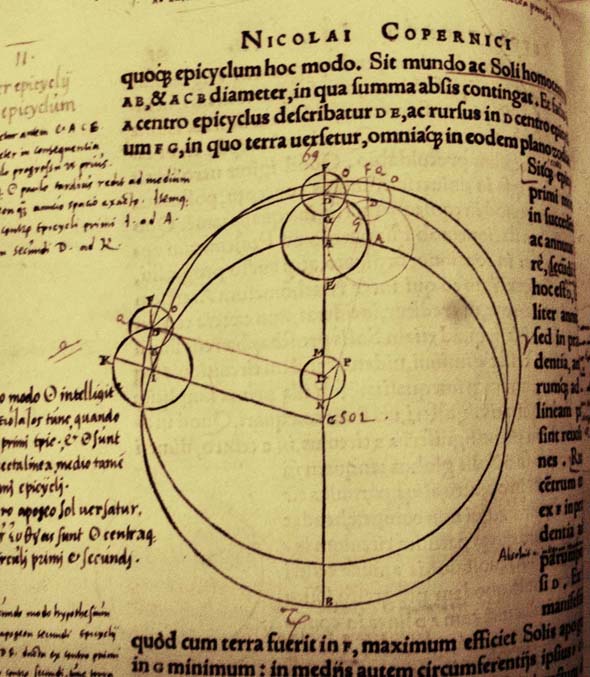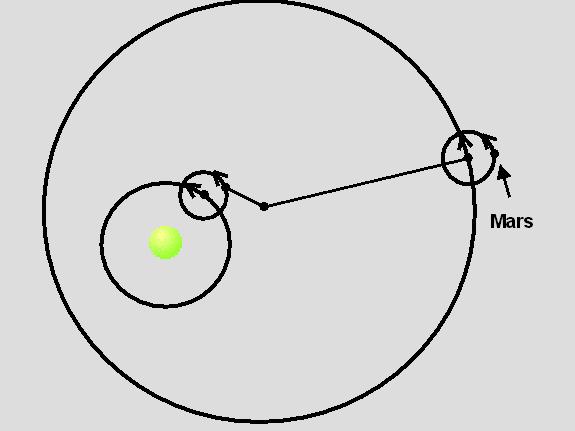

Copernican Model of the Solar System
Copernicus published his work "De Revolutionibus Orbium Caelestium" in 1543 (the year of his death). The first chapter gives a "popular" description of his work, and the following chapters are full of extremely detailed and sophisticated mathematical calculations to derive the best possible fits to the motions of the planets in his new system. No one but professional astronomers, and dedicated ones at that, would have penetrated past the first chapter. It has been suggested that the opaque style of these chapters caused the book to pass virtually unnoticed among the public and the church, while astronomers read it all because of the advanced new calculations and mathematical methods it presented, methods they could apply to other problems.
In the first chapter, he makes clear his motivation: "[Those who use] eccentrics and epicycles .. do not completely attain their ends. ..though they appear to have well-nigh established the seeming motions by calculations agreeable to their assumptions, [they] have yet made many admissions which seem to violate the first principle of uniformity of motion. Nor have they been able thereby to discern or deduce the principal thing - namely the shape of the universe and the unchangeable symmetry of its parts. With them it is as though an artist were to gather the hands, feet, head, and other members for his images from diverse models, each part excellently drawn, but not related to a single body, and since they in no way match each other, the result would be monster rather than man." - T. Kuhn, P. 139.
 |
|
| The following mathematical chapters undermine Copernicus' claims for making an advance seriously. For example, above is Copernicus' model for the motions of Mars. There is an epicycle going at constant speed around a circular orbit around the sun (yellow ball). At a fixed position from a point on this epicycle is the center of a larger circle. An epicycle circulates around this circle at constant speed, and Mars circulates on this epicycle at constant speed. The "simplicity" achieved over the Ptolemaic system has been lost in complexities required to achieve a reasonably accurate match to the motions of the planet. Although the new model may have preserved some sort of constant motion, the resulting improvement in symmetry or purity is of a sort that would be apparent only to its inventor, with his specific mind-set for what was monstrous about the earlier system. (left figure from the Crawford Collection, Royal Observatory, Edinburgh, photo by G. Rieke; right figure by G. Rieke, after T. Kuhn, "The Copernican Revolution") | |
However, Copernicus's new system did have some aesthetic advantages:
Nonetheless, it is not surprising that astronomers adopted the system slowly, and then largely because of the quality of Copernicus's calculations rather than the new vision of the solar system. The attitude of many is summarized by a quotation from Thomas Blundeville in 1594: "Copernicus .. affirmeth that the earth turneth about and that the sun standeth still in the midst of the heavens, by help of which false supposition he hath made truer demonstrations of the motions and revolutions of the celestial spheres than ever were made before." - Kuhn, The Copernican Revolution, p. 186
Converts were slowly won over. An important one was Michael Maestlin, professor of astronomy at the University of Tubingen. There, he taught the Copernican system to an eccentric but very intelligent student - Johannes Kepler.
Material largely from Tomas Kuhn, The Copernican Revolution, 1957